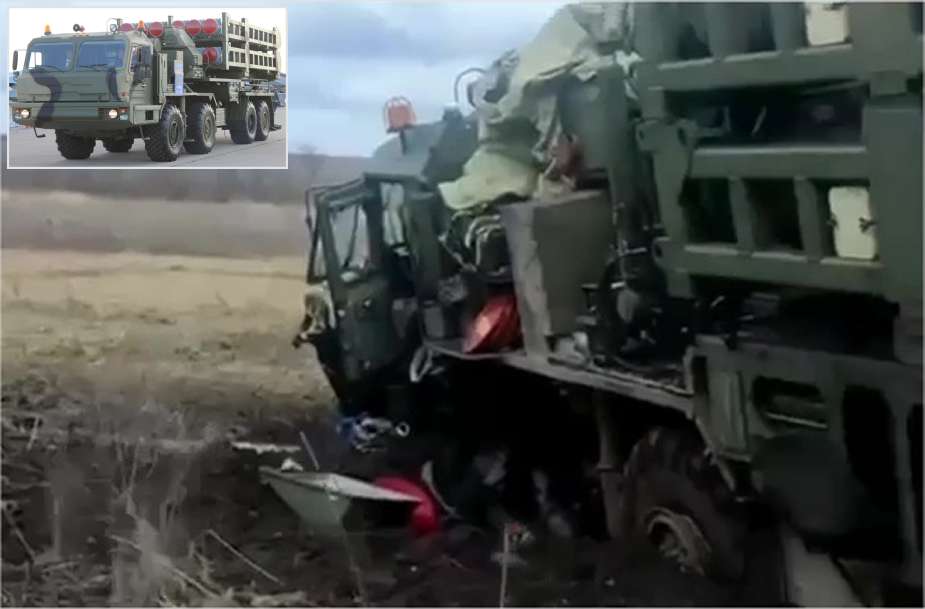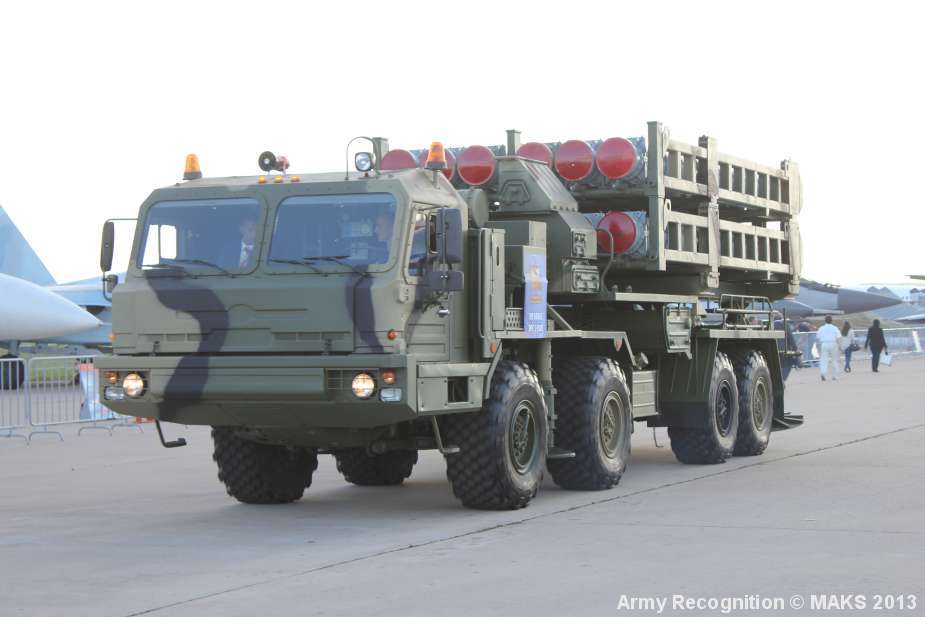On February 6, 2024, the Telegram channel Spy Dossier disclosed an incident involving the Russian Airborne Forces in the occupied Ukrainian region of Luhansk. A 50P6E launcher, part of the S-350E Vityaz air defense system, was damaged during night operations. According to available information, the Russian forces, ironically, became victims of a mine from defenses presumably laid by themselves.
Follow Army Recognition on Google News at this link

According to available information, the Russian forces, ironically, became victims of a mine from defenses presumably laid by themselves. (Picture source: Spy Dossier and Army Recognition)
The explosion caused no casualties, as the missiles on the 50P6E launcher were not detonated. However, the chassis of the vehicle was considerably damaged, leaving the launcher immobilized in a densely mined area. The Russian soldiers' fear of triggering further mines delayed recovery efforts, with the damaged launcher still at the scene of the incident at the time of writing. However, this fear shows that this minefield has served its purpose, even if it is the Russian, not the Ukrainian, advance that is being slowed down.
The S-350E Vityaz air defense system, developed by the Russian defense company Almaz-Antey, was introduced to replace older systems like the S-300PS, offering advancements such as improved radar and a launcher with a capacity for 16 missiles, a significant upgrade compared to its predecessors. The development of the S-350E Vityaz began in 2007, with a prototype showcased at the MAKS-2013 exhibition. Following successful range trials in 2013 and the commencement of batch production in April 2019, the system was officially adopted into service in 2020.
The system is equipped with the 9M96 missile family, originally designed for the S-400 system, capable of engaging aerial and ballistic threats with precision. The 9M96 missiles feature advanced guidance systems, including passive IR homing, and offer a wide engagement range from 1.5 to 120 kilometers, with altitudes spanning from 10 to 30,000 meters. Additionally, it can deploy the 9M100 guided missile for shorter-range engagements against aircraft, UAVs, and cruise missiles.
Mobility is a key feature of the S-350E Vityaz, mounted on an 8x8 truck chassis, enabling rapid deployment and maneuverability across various terrains. The power plant, featuring a potent diesel engine, allows the system to reach speeds of up to 80 km/h with a cruising range of 1,000 km. The robust chassis enables navigation through challenging obstacles, including steep gradients and fording depths up to 1.4 meters.
In terms of command and control, the S-350E Vityaz integrates multiple components for seamless coordination and operation. The 50K6E Command and Control Post manages subsystems, allocates targets, and oversees overall system functionality. Supported by the 50N6A Multifunctional Radar, which detects, tracks, and identifies targets, and the 50P6 Launcher Vehicle responsible for missile deployment, the system forms a comprehensive air defense network.
In combat scenarios, the S-350E Vityaz demonstrates its efficacy through a well-coordinated battery configuration. Each battery comprises a fire-control system, missile launcher platforms, and a resupply vehicle mounted on a robust truck chassis. With a standard missile load of 48 weapons per battery and rapid reloading capabilities facilitated by a crane system, the S-350E Vityaz ensures sustained readiness to counter airborne threats effectively. Overall, the system represents a significant addition to Russia's air defense capabilities.

The S-350E Vityaz air defense system was introduced in 2019 to replace older systems like the S-300PS, offering advancements such as a launcher with a capacity for 16 missiles. (Picture source: Army Recognition)















